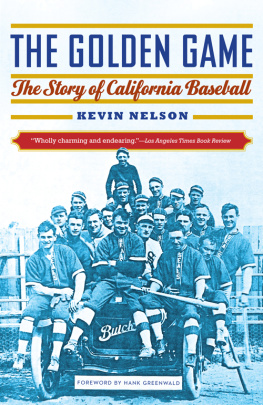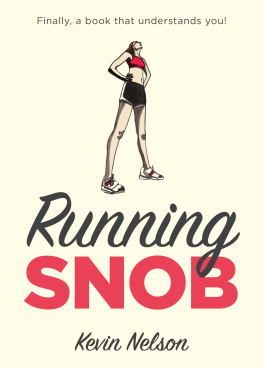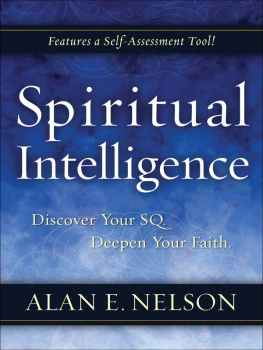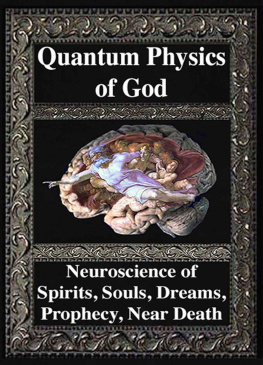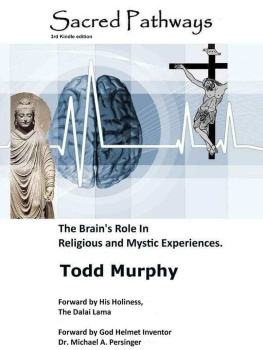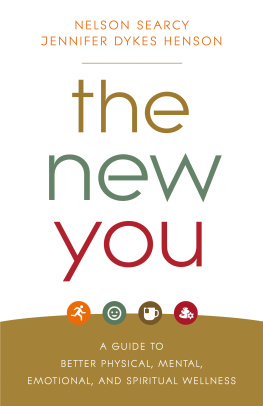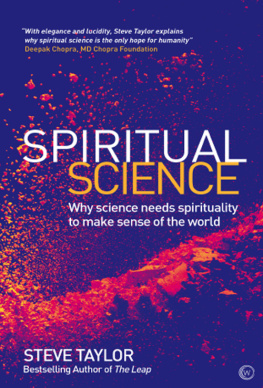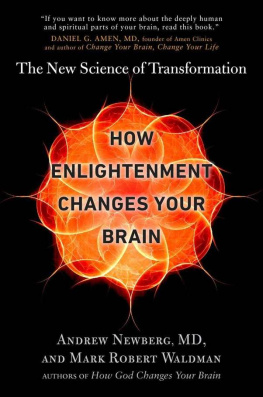THE
GOD IMPULSE

First published in Great Britain in 2011 by Simon & Schuster UK Ltd
A CBS COMPANY
Copyright 2011 by S.E. Neuroscience LLC
This book is copyright under the Berne Convention.
No reproduction without permission.
All rights reserved.
The right of Kevin Nelson, M.D. to be identified as the author of this work has been asserted by him in accordance with sections 77 and 78 of the Copyright, Designs and Patents Act, 1988.
Simon & Schuster UK Ltd
1st Floor
222 Grays Inn Road
London
WC1X 8HB
www.simonandschuster.co.uk
Simon & Schuster Australia
Sydney
Image credits:
Images .
Used with permission of Professor Charles Lieber; Image : Adopted with permission from Maquet, P., P. Ruby, A. Maudoux, G. Albouy, V. Sterpenich, T. Dang- Vu, M. Desseilles, M. Boly, F. Perrin, P. Peigneux, S. Laureys. Human Cognition During REM Sleep and the Activity Profile Within Frontal and Parietal Cortices: A Reappraisal of Functional Neuroimaging Data. Progress in Brain Research 150 (2005): 219227.
A CIP catalogue copy for this book
is available from the British Library.
ISBN: 978-1-84737-831-6 (hardback)
978-0-85720-190-4 (trade paperback)
eBook ISBN: 978-1-84737-832-3
Designed by Daniel Lagin
Printed in the UK by CPI Mackays, Chatham ME5 8TD.
To my parents
Sine qua non
In loving memory of Dorothy Nelson,
Raymond F., and Barbara Nelson
CONTENTS
P ROLOGUE
A T THE F OOT OF THE B ED
P ART O NE
T HE A RCHITECTURE
1. W HAT I S A S PIRITUAL E XPERIENCE?
From Fear, to Pinball, to Fields of Daisies
2. T HE T HREE S TATES OF C ONSCIOUSNESS
And Where Spiritual Arousal Happens
3. T HE F RAGMENTED S ELF
How We Become Our Own False Witness
P ART T WO
A T THE D OORWAY
4. T HE V ARIETIES OF N EAR- D EATH E XPERIENCE
Telling Stories
5. T HE B RAIN AT D EATHS P ORTAL
Light and Blood
6. T HE A NCIENT M ETRONOME
The Tempo from Fear to Spiritual Bliss
7. T HE B ORDERLAND OF D REAMS AND D EATH
What May Come?
P ART T HREE
T HE O THER S IDE
8. T HE B EAUTY AND T ERROR OF O NENESS
Deep Within the Mystics Brain
E PILOGUE
A N EW B IRTH OF W ISDOM
THE
GOD IMPULSE
Prologue
AT THE FOOT OF THE BED
Your adversary the devil, as a roaring lion, walketh about, seeking whom he may devour...
I P ETER 5:8
T his book began nearly thirty years ago, when I was training as a neurologist at the University of New Mexico Hospital in Albuquerque. Neurology interns do a year of internal medicine, and I had a Hispanic patient named Joe Hernandez, who was under my care for his diabetes and heart disease. Joe was a weathered man, a laborer whod spent much of his life outside in the Southwest desert. We quickly formed a bond, although our backgrounds were completely different.
I had been raised in a modest but comfortable home in the small town of Grand Haven, a conservative Dutch Protestant community on the shore of Lake Michigan, nearly two hundred miles north of Chicago.
Even as an adolescent, I was fascinated by the study of the brain and knew that I wanted to be a neurologistnot a family doc, cardiologist, or any other medical specialty. At Michigan State, I gravitated toward the emerging field of behavioral neurology, which studies how the brain coordinates the amalgam of thoughts, feelings, perceptions, and memories we call the self. It investigated what happens when you stimulate or disable specific parts of the brain: why, for example, a stroke victim who suffered a lesion on the right side of his brain completely ignored the left side of his body; or why, as Oliver Sacks famously noted, a man could mistake his wife for a hat.
That was the kind of work I wanted to do. My undergraduate thesis involved chemically stimulating a tiny region of a female rats brain and then recording whether she would let a male rat mount her. Like the behavioral neurologists, I wanted to understand how specific behaviors stem from precise locations in the brain.
Through localizing brain function, the behavioral neurologists had shown that who we think we are is a complicated and rather fragile synthetic process orchestrated by our brains. When something interferes with that process, our reality and sense of self quickly and dramatically fragment. While most of us view our self as concrete and coherent, akin to, say, Leonardo da Vincis portrait of the Mona Lisa, to a neurologist the self is more like Picassos cubist portrait of Dora Maar, his lover and muse: a fragmented amalgam of fractured planes. Or, if you prefer Impressionism, our view of the self is a little like a water lily by Monet: at a glance it looks coherent, but up close you realize its harmonious appearance is an illusion, that the object you saw at a distance is actually a bundle of discrete and unconnected parts.
It was this fragmentary nature of the self that I wanted to study, which is how I found myself as a neurology intern at the University of New Mexico Hospital, caring for Joe.
Not long after entering my care, Joe had a massive heart attack and spent more than a week in the ICU. Frankly, I didnt think he was going to make it, and I was much relieved when he pulled through. I attributed his recovery to his tenacious spirit and sound medical care. But Joe had a very different explanation for why he was still alive, as I learned soon after his discharge when he came to see me for a follow-up examination.
Doc, I have a gift for you! he exclaimed right off and handed over a photo of an incredibly realistic oil painting, a self-portrait. Joe was in the ICU. Bright lights blazed. A battery of medical instruments stood to one side of his bed. Intravenous bottles hung above him; tubes fed into both his arms. Although it was clear that he hovered between life and death, Joe had depicted himself as awake and alert.
At the foot of his bed stood Satan, a devil with horns in a red robe.
He had come to claim my soul, Joe explained. But look, here is my guardian angel. An angel with a halo and wings outstretched stood between Satan and Joe.
The devil, he was stronger, said Joe. He was about to take my soul. And then my savior Jesus appeared and the devil vanished. I was greatly relieved, for then I knew my health and soul were safe, and I would be allowed to remain on earth a little while longer. Jesus came to save me. Doctor, it is a miracle!
Perhaps it was a dream, I suggested as gently as I could. I judged Joes near-death experience to be a quaint blend of cultural myth and illusion. My training in neurology told me that he had been hallucinating. Joe, however, was adamant: his experience had been absolutely real.
I often thought about Joes painting in the following months. What struck me was the vividness and intensity of the experience it portrayedcharacteristics that sharply distinguished it from common illusions or dreams. Even at the beginning of my career, I knew that patients, in retrospect, typically recognize hallucinations for what they are: hallucinations. But Joe was firmly convinced that a battle for his soul had really occurred in the ICU.
I knew that the brain that fuses Monets strokes of color to perceive a water lily was also responsible for the hyperrealistic image Joe saw when he was close to death. As a fledgling neurologist, it was natural for me to take the same tack as Picasso and deconstruct the brain processes battling for Joes soul. What was the locus of brain activity responsible for what had clearly been for Joe a deeply important religious experience?


